The Arts
Strengthen your faith by engaging in Torah Art(Shemot 15:2)
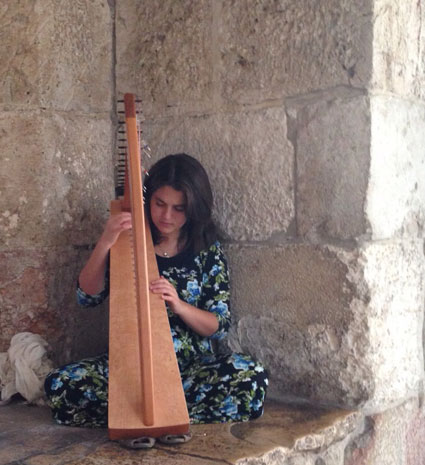
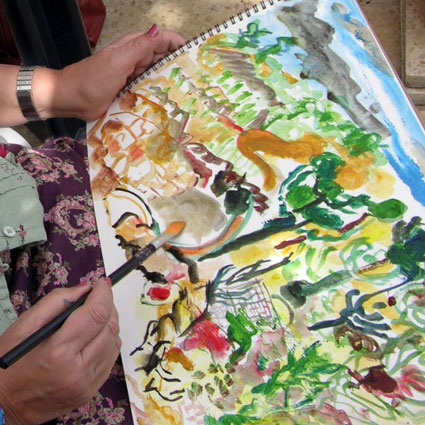
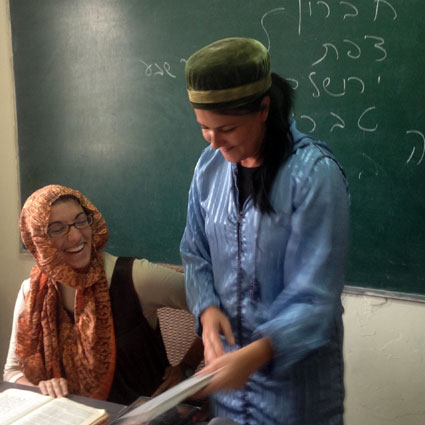
(Yuval Orot 153)
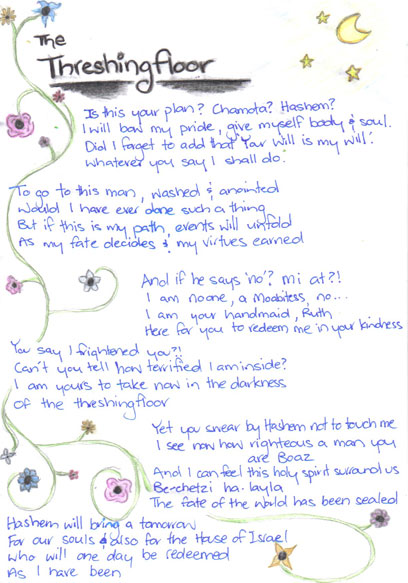
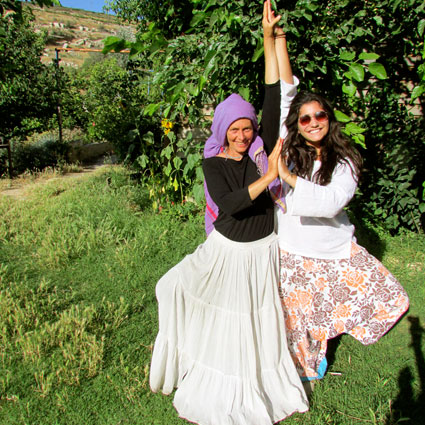

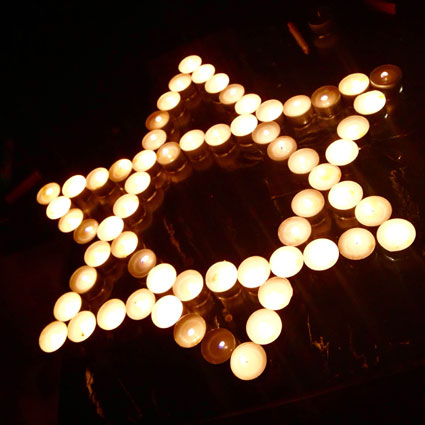
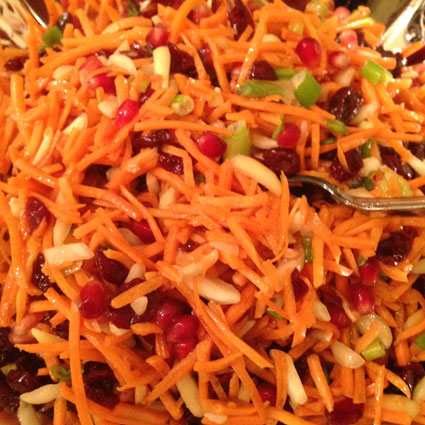
Torah Art is about the spiritual nature of one’s encounter with the physical world.
One of the key ways of gaining closeness to G-d is through imitating G-d’s ways. What greater form of G-dliness is there than creation? Torah-art is not about imitating creation but imitating the Creator in the creative process.
Art must be within a frame of holiness, to express G-d and inspire Divine worship in the world. It becomes a tool rather than a means.
To capture the Divine art needs to be alive, rather than frozen, the more different modalities the art is expressed in the more it is alive.
The industrial world sets everything up in triangles, bricks enslave us. Eastern worship big golden circle, this too is closed. The artistic shape of Judaism is the spiral – an open ended dynamic growing system. It is a branching system of the Menorah, where you can always add another branch.
Art teaches us to open our eyes and become sensitive to the beauty bridging the physical and the spiritual world. Through art we can capture Hashem’s light and express spiritual truth beyond words.
Torah Art is to pierce through the limited physical reality and paint a window of light for the light of Ein Sof to shine through. The main function of art in the Torah is as a prism for revealing Divine light of Tiferet, Beauty, Balance, and Harmony in the world.
“…This is my G-d and I will beautify him, my father’s G-d and I will exalt him” (Shemot 15:2). From this verse we derive the concept of “hidur mitzvah,” performing mitzvot in the most beautiful manner, glorifying Hashem through beautiful religious objects. We honor Hashem by beautifying the mitzvoth: a rich velvet cover for the Torah scroll, a home embroidered challah-cover, an exquisite etrog-box and colorful artwork in our welcoming home. Beautifying the world through art gives us the ability to capture a spark of the Divine Splendor.
In his work The Lonely Man of Faith, Rav Soloveitchik explains that one should utilize various forms of beauty to express one’s relationship with his Maker. The power of the Chiddush is to create new ideas and even create ourselves into new people, through the study of Torah and in the Teshuva-process.
Rav Kook teaches that the artist “expresses the deepest creases of his soul” (Yuval Orot 153). It is the role of the artist to bring out the G-dliness in creation, to show that the Divine engulfs every aspect of life.
Through art we connect Heaven and Earth. The Eternal House of Hashem is the utmost expression of art and creativity. Materials of gold, silver and copper were elevated in the most exquisite shapes and patterns to give glory to the Almighty.
We all have a spark of G-d’s light within us. Art workshops can help us get in touch with this inner light. Learning about the art and colors of the Temple, help us visualize the glory of the Temple, so that we will be able to yearn for its rebuilding.
“Five curtains shall be coupled together a woman to her sister; and the other five curtains shall be coupled a woman to her sister…” (Shemot 26:3). The Mishkan and its components are literally and metaphorical vehicle for connectedness. The Mishkan’s purpose was to provide a place where G-d could connect with the Israelites here on Earth, where his presence could dwell amongst us. At a symbolic level the use of the feminine metaphor “each woman to her sister” is meant to underscore for us the centrality of the Feminine Force in creating connectedness: connectedness between each of us and G-d, as well as connectedness between people.
“Every woman that was wise-hearted did spin with their hands…” (Shemot 35:25). The Torah emphasized that women have both wisdom and the ability to express this wisdom creatively through the use of their hands. They did not hire workers to do the spinning for them, but they themselves put their own effort into the spinning, because of their love for the mitzvah. This is also expressed through the phrase “wise hearted in her hand.” The wisdom of women is to connect our heart with our hands – the creative concept with its physical manifestation through the work of our hands.
The tense of the verb does not fit the subject. Whereas, the subject is written in singular “Every woman” – “Kol Isha” the verb is written in plural: “they spun” – “tavu”. The Shach explains that as soon as the women would take the blue wool to spin, Divine assistance would cause it to be spun by itself. Therefore, the word for spin “tavu” is written in the plural, since another force would spin with them. Likewise, women of today should not despair from expressing our individual creativity. When our excitement and devotion spurs us on to paint, sing, dance, weave or spin, then G-d will surely assist our creative endeavor.
In our modern society, where everything can be bought ready-made, we often lose contact with the pleasure and satisfaction of expressing our creativity through the loving gifts of our own handicrafts.
In our roles as mothers, women are naturally partners in Hashem’s creative process. Through Torah-Art, Jewish woman can express this inert maternal creativity by giving birth to Divine sparks within the garments of music, poetry, dance, painting, and more.
From time immemorial, art and music have always held a central place in the service of Hashem. The women leaving Egypt were praised for packing their tambourines in order to praise Hashem for the miracle at the splitting of the sea where they sang: זה קא-לי ואנויהו – this is my G-d and I will beautify Him…
The Jewish people have suffered a long and wearisome exile, through which we have been depleted of much of our spirit. Prophesy which characterizes our essential quality as Jews has long departed from us. Traditional Judaism had distanced itself from art because it was often associated with immodesty. However, the majority of Jews have been estranged from Judaism as assimilation has been ever increasing. Many youngsters reject the version of Torah observance they grew up with as they feel it is void of flavor, sparkle spirit and emotion. Therefore, a critical component of our current Geulah process is to return art to authentic Judaism, by glorifying Hashem through art.
Integrating creative arts into the Torah experience is a very powerful tool in bringing people back to the Torah way of life. Torah-art facilitates a personal connection with the Torah. Through art, drama, singing and drumming workshops, students can attain a feeling of closeness with Hashem and restore their emotional attachment to Torah observance. They can bring the lessons of the books into a deeper reality, internalizing the learning by expressing it in their own personal way.
Now that we are gradually returning to our Land and to our roots, our spirit and yearning for deep closeness with Hashem and Ruach Hakodesh is returning with us. Therefore, the role of creative arts in the Torah world is undergoing a spiritual renaissance. We women, have the major role of bringing Geulah by revealing Hashem’s light within the darkness of our physical realm. May we merit to paint a window of light for the light of Ein Sof to shine through!
